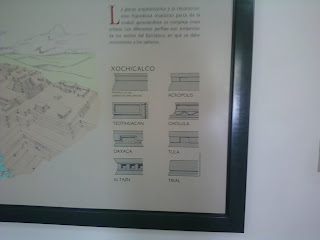LAST 211

The map above shows many of the indigenous tribes and their approximate whereabouts through-out Latin America. Although there are many tribes and not all may be represented on the map, we can see the location of the more significant tribes other than just Mayans, Aztecs, and Incans.
Design Styles of Aztec and Mayan Cities
The above picture shows the building styles of major cities in Mesoamerica that include both Aztec and Mayan cities. Lithology has also played a role in separating Aztec and Mayan architecture. Otheres might include style of hyroglyphs.

After Conquest, Latin America was broken into Viceroyalties, which were then subdivided into Audiencias
During the time of Conquest, the Spanish would establish cathedrals, and buildings of significance over the runis of destroyed pyramids. In the Palace of Cortez in Cuernavaca, and excavation of the palace reveals the stone floor of the pyramid the the palace was built on.

Above is a contemporary map of Latin America complete with countries and capitals.

Some Important Geographic Features:
- Rio Bravo/Grande: The river that divides North-East Mexico (Latin America) with United States. The border between Mexico and the United states is the most frequently crossed border in the world and is the only land border that divides a first world country with a third world country. The river is also a site for illegal transit into the United States for Mexicans and many other people through out Central America..
- Sierra Madre Occidental & Oriental: Mountain chains that are a continuation of the Rocky Mountains. The Sierra Madre Occidental and Oriental mountains make up the most of the Cordillera range in the northern portion of Latin America. The cordillera ranges,(in South America inclusive) supports a large portion of the whole population of Latin America.The mountains are rich in metals including silver. These mountain ranges also contain volcanoes. leached minerals and ash contribute to the fertility of the land.
- Andes: The Andes are another significant mountain chain in Latin America which two is rich in mineral resources particularly copper. High prices and demand for copper has helped developed the Chilean economy. Chile is one of the worlds largest producer of copper.
- Amazon Basin: The Amazon Basin is home to the tropical rain forest which has a wealth of bio-diversity, fertile lands, and natural resources. The portions of the rain forests are cut-down to make use of the fertile ands for cattle farming and agricultural production. Run-off from the Andes and surrounding highlands drains into the Amazon River.
- Amazon River: The second largest river in the world in terms of volumetric flow. The river is home to a wide variety of aquatic life.The rivers is fed from run-off in high elevation regions such as the Andes and Brazilian highlands.
- Brazilian Highlands: The Brazilian Highlands contains the majority of Brazil's population, and a large part of Latin America's population. Because the region covers a large area, there is a large bio-diversity, and wide range of climate conditions
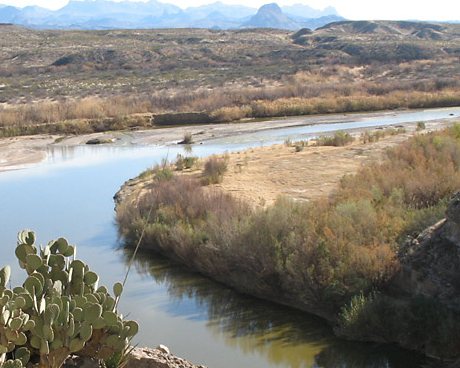


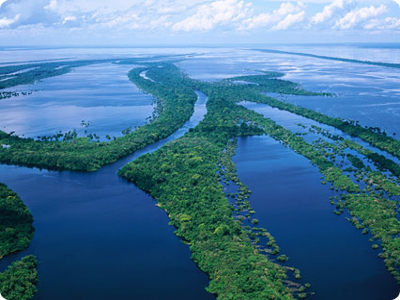
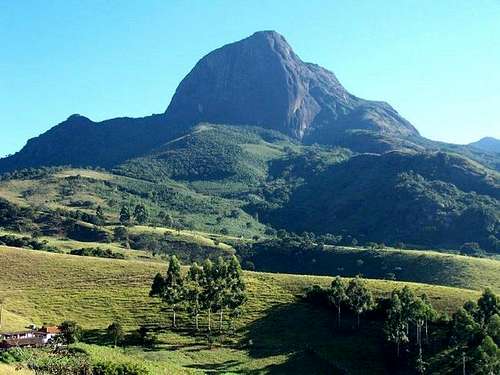
The map above shows the distribution of indigenous languages that are spoken by at least 40% of the local population. It can be observed that the southern, central, and Yucatan regions of Mexico exhibits the greatest concentration of indigenous languages, and population. Concentrations of indigenous population can also be found in isolated northern regions as well. it should be noted that indigenous languages are spoken through out Mexico, and not just limited to what is displayed on the map, however, the fraction of population that speaks local indigenous is much less.

- Although there are many indigenous languages in South America, the above map displays the distribution of major indigenous language families of South America. The language families appear to be localised while others are somewhat sporadic. Physical regions such as the Brazilian Highlands exhibit mainly the Macro-Ge family, whereas the Amazon Basin supports the sporadic blend of indigenous language families.
- Food:
- Mole:
- Mole poblano is a speciality sauce that originated in Puebla in the kitchen of the former covent of Santa Rosa by Augustinian nuns. The sauce is used in a variety of Mexican dishes. Because there are many ingredients, mole is made differently from family to family. To some families the recipe is almost secret. there are other forms of mole such as "mole verde", however, it is completely different than the tradition kind.
- Tequila:
Tequila is a very popular liquor known the world over; however, much time is put in to the process of making tequila including the 7-8 years to grow the agave to an ideal age for harvest. Tequila is made from the Blue Agave plant ONLY. There are only a few Mexican states that grow the blue agave. Tequila can only be produced in Jalisco, and designated regions of few other states. Tequila produced outside of Jalisco must have a parent factory existing in Jalisco.
Cheep or Ordinary tequila that is used as shooters in bars are made of a minimum 51% blue agave. This type of tequila can be produced world wide. Tequila that has the infamous worm, is mezcal, which is usually just made from green agave in a similar process. The worm is simply an indicator of the preservable state created by the alcohol content of the mezcal There are some distilleries that specialize in mezcal.
As shown by the map, there are many styles of Music distributed through out Latin America. Many of them trace there origins through Cuba to their African, or European roots. Of the many well known styles of Latin music such as Salsa, Tango, and Cumbia that are known the world over, there are others that have only developed regional popularity. Below are samples of other styles of Latin music.
Music styles of Mexico and Central America
Tejano:
Tejanotex-mex music, and is played in large group bands that play music similar to North American, and European impression of traditional Mexican music.
Son Guatemalteco:
Son GuatemaltecoChiapas (Mexico) to Costa Rica. The music has some European influences.
Punto Guanacaste:
Punto Guanacaste is the National dance of Costa Rica the features a ballad style of folk music and originates from the province of Guanacaste. Includes the Marimba along with guitars and other instruments as shown above.
Music styles of the Caribbean
Soca:
Soca is a form of music born as a way to revitalize calypso music that came about in the 1960's by blending East Indian rhythms, and instruments with Afro-Caribbean sounds.
Rumba:
Music styles of the Andean Region
Chicha:
Chicha is a modern music combination of Huyano and Cumbia from nothern Peru. The music's routes can be traced through of both musics'
Music styles of Brasil
Samba (Carioca):
Samba, is a music and dance style with african origins made popular by Brazil's carnival.
Music styles of River Plate Area
Cumbia Villera:
Cumbia Villera is a modern blend of urban and punk rock that was created out of the suburbs of Buenos Aries and is ofter diregarded by the upper class Argentinians because of its nature. The Music usually involves topics of Sex, drugs, alcohol, defying police/authority, society, racism and portrays woman as materialistic, and disposable objects of sex. The music flourished during Argentinas economic crisis in 2001.
Murals
Above is a Mural done by Diego Rivera in the Palace of Cortez in Cuernavaca, Mexico. The mural displays scenes of the events that happened in the region at the time of conquest.
Religious Folk Art and Religious and Mythical Figures
Popular Religion
Deep in central Mexico, is the town of Chalma. In the mountains, the indigenous people worshipped a cave god, and had a statue which they used to idolize. In 1533, it was siad that the cave god statue was replaced with a wall drawing of Christ. Today, it is a site of pilgrimage where people make the hike through the gorge to the church that houses Senor Chalma.
Church of Senor Chalma
Statue of Senor Chalma
Senor Chalma is known as the "Tough Jesus". People pray to, and even make contract with. People make contracts with Senor Chalma to overcome things such as addiction. Breaking a contract with Senor Chalma will result in a punishment of hardship and bad luck.
As a special thanks for answering the prayers of the faithful, the people leave Ex-votos in a special place in the church.
Comics
The thinker has now been replaced with the computer. So true in this day and age where we almost strictly rely on computers and machines.
Something about perspective...?
Social Movements:
Cuban Revolution:

Che Guevara is a popular image among socialist national movements. He helped lead the Cuban revolution.
Chavismo:

Chevez had implemented a radical socialist movement. Chavez offered cover to Colombian gurillas, and purposes strict policies with OPEC against the US. Chavez was a critic of the oligarchy the previously ruled Venezuela Recently Chavez has put in his bid for the upcomming elections.
Zapatismo:
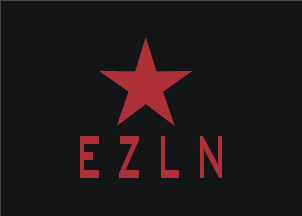
The Zapatistas are a group of Mayan rebels that stand against the modernization of agriculture and agro-business brought about by NAFTA

Peronismo was a labor movement in Argentina that aimed at making Argentina independent from foreign economic influence and creating unions.
Ethnography: Ethnic Identity in Mesoamerica.
An Ethnography on Nahua tribes in Mesoamerica that had been developed by many authors of various backgrounds, examining the ethnic identity of the Nahua people in various times and places in central Mexico. See book report.
Song: Guantanamera
Guantanamera is a very popular Cuban folk song. It is an unofficial national anthem. the song takes on different styles and meanings because sections of the song can be formed with various poems. See song analysis.
Fiction Book: In Evil Hour
Taking place in a small Colombian town, Lampoons have began to appear around town. After the first murder resulting from rumors spread by the lampoons, the town shifts to a state of unrest and martial law. Events in the storey serve as a parallel and analysis for past events in South America. See book report.
